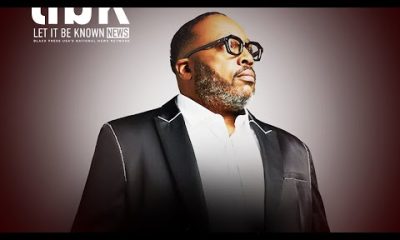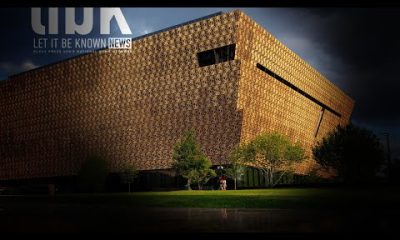#NNPA BlackPress
COMMENTARY: SMU Perkins Five Black Trailblazers Changed Face of Campus, Part II
NNPA NEWSWIRE — In part II here, we discuss what happened concerning desegregation at Southern Methodist University (SMU) after the first five Black Perkins School of Theology students integrated the campus in 1952 then graduated in 1955.
The post COMMENTARY: SMU Perkins Five Black Trailblazers Changed Face of Campus, Part II first appeared on BlackPressUSA.

“I was just thinking…”
By Norma Adams-Wade, Founding Member of the National Association of Black Journalists, Texas Metro News Columnist
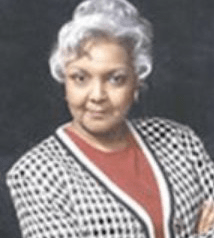
Anga Sanders Credit: Twitter
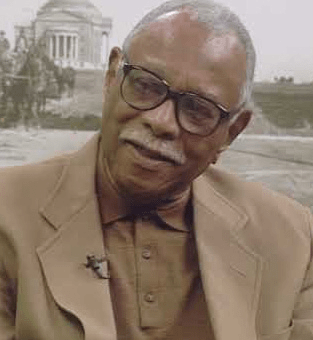
Irving Baker Credit: YouTube
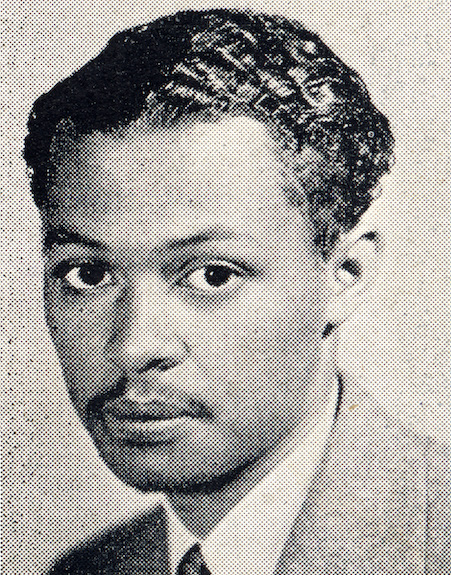
William Shedrick Willis Credit: Howard University 1942 year book
In part II here, we discuss what happened concerning desegregation at Southern Methodist
University (SMU) after the first five Black Perkins School of Theology students integrated the campus in 1952 then graduated in 1955. In 2013, Scott Alan Cashion was a candidate for the Doctor of Philosophy degree in History at the University of Arkansas at Fayetteville. His doctoral research gives a fairly clear view of how SMU’s “lily-white” walls came down during the 1950s to 1970s when the school began to be more visibly integrated.
Here are some highlights of subsequent years gleaned from Cashion’s research:
-
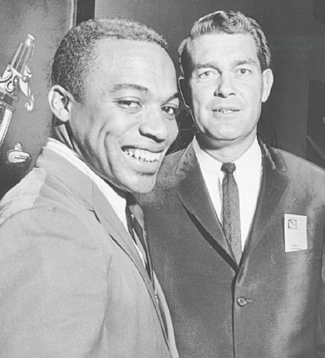
Jerry LeVias and (Rt) coach Hayden Fry Credit: The Dallas Morning News
1955. The year that the first five Black students graduated from Perkins. They were John Elliot, James Hawkins, James Lyles, Negail Riley, and A. Cecil Williams as chronicled in Part I. That same year, trustees agreed to admit “qualified” Black students to evening classes at SMU’s Dedman School of Law. Ruby Braden Curl, who was about age 30-ish and had been a Dallas public elementary school teacher for about nine years, became that first Black Dedman student. Records indicate Curl left after about one year.
- 1956 -1959. A few other Black law school students apparently came and went, seemingly one at a time, but none apparently graduated before leaving.
- 1960. According to Cashion’s research, Richard A. Strecker enrolled in the law school and in 1964 earned what was then a Bachelor’s Law degree, later titled a Juris Doctor (J. D.) Law degree. Also, it was the 1960s before SMU had Black students in all of its undergraduate colleges, and most other Texas colleges had a few Black students in small numbers.
- 1961. The SMU student body at large started pressuring the administration, and Methodist Church that traditionally controlled it, to admit undergraduate Black students. There also was at least one sit-in at University Pharmacy supporting efforts to improve health care services for Blacks.
- 1962. SMU fully desegregated its undergraduate program and hired head football coach Hayden Fry – later a major force in integrating the Mustangs football team.
- 1964. SMU further desegregated athletics, faculty, and student organizations, the year following the 1963 assassination of Pres. John Kennedy in Dallas.
- 1966. Martin Luther King Jr. spoke on campus on March 17, 1966, after receiving a friendly invitation from the then all-white Student Senate. He was the first national civil rights leader to speak on campus. But citywide, his reception was cold, including from some local Black ministers.
- 1968-1969. Black activism arrived on campus when Black students organized a non-violent group that began protests in 1969. Anga Sanders was a standout activist leader and one of 33 Black students who formed the Black League of Afro-American and African College Students (BLAACS). The group presented demands during a meeting with SMU Pres. Willis Tate and did a sit-in outside Tate’s office. BLAACS helped change a racist environment that included an annual fraternity-sponsored mock slave auction complete with a giant Confederate flag and costumes during Old South Week on campus.
- 1969. Irving Baker of New York and New Jersey was hired as Pres. Tate’s special assistant. Baker had been executive president at Bishop College. At SMU, he developed a new Afro-American Studies program and other diversity activities.
- 1970s. Black sororities and fraternities arrived at SMU. Previously, there were no Black social outlets on campus. 1978. Blacks entered campus-wide leadership when two Black males won the two top student government offices. David Huntley was elected President and Brett Ledbetter vice-president, both in run-offs. It was the first time in SMU history that the top two student officials were Black. I will face trouble if I attempt to call names of prominent Black SMU graduates through the years and to the present.
The names include those who in later years sailed through relatively unscathed and those who in early years faced either isolation or gut punch racism, such as star football player Jerry LeVias. He was emotionally rejected by his own team members in the 1960s and spit on and harassed by some opposing players and students. But the roll call of Black SMU and Perkins graduates, faculty and administrators would be impressive. Lessons were learned along the way, although the current #BlackAtSMU project indicates that students and alumni still are seeking improvements. I wish them well.
1965 was an especially busy civil rights year, nationally and at SMU. Here are some highlights:
- SMU and then all-Black Bishop College collaborated that January and allowed 25 Bishop Students to take undergraduate classes that Bishop did not offer.
- The ’65 Watts riots happened in California.
- Dr. Martin Luther King Jr. witnessed President Lyndon Johnson sign the ’65 Voting Rights Act.
- SMU Coach Hayden Fry recruited football star wide-receiver Jerry LeVias from Beaumont who became the first Black in Southwest Conference history to earn an athletic scholarship. LeVias also excelled academically and graduated in Spring ’69 near the top of his class. Despite Fry’s moral support, LeVias experienced cruel rejection and racist acts from teammates and the public, yet he excelled anyway.
- Anga Sanders, a stand-out SMU activist freshman during LeVias’ 1966 sophomore year reflected on that time: “I’d have to say that our tenure was characterized more by benign neglect than anything else. We were an invisible minority, and little if any thought was given to our feelings about or response to (bigoted) things that were simply accepted at SMU.”
- The invisible minority she was referring to were black students who were not involved with sports teams. She said she never received any of the ridicule that was aimed at LeVias, nor did she recall any other black student mentioning threats like those made against the pioneer Black football star.
- The main reason was because Anga Sanders, and the other 132 black students at the time, were never put on as visible a stage as the Mustang football team.
- Also in 1965, William Shedrick Willis, born in Waco and grew up in Dallas, became the first Black to join SMU’s faculty in the Sociology and Anthropology department. Part of his time, the Howard University grad also taught at Bishop College. Willis gave up his Bishop duties and in 1967 became a part-time SMU assistant professor. That same year he advanced to full-time, then in 1968 became an associate professor with tenure. Four years later in 1972 he resigned after negative experiences with other faculty and enduring his comparatively lower salary despite his heavier class load.
Norma Adams-Wade, is a proud Dallas native, University of Texas at Austin journalism graduate and retired Dallas Morning News senior staff writer. She is a founder of the National Association of Black Journalists and was its first southwest regional director. She became The News’ first Black full-time reporter in 1974. norma_ adams_wade@yahoo.com.
The post COMMENTARY: SMU Perkins Five Black Trailblazers Changed Face of Campus, Part II first appeared on BlackPressUSA.
#NNPA BlackPress
LIVE! — HE SAID, HE SAID, HE SAID: APRIL FOR THE ARTS 2025, MARIA LANA QUEEN — FRI. 4.25.25 7PM EST
Tune in Friday, April 25, 2025 @ 7pm EST for another live new episode of “He Said, He Said, He Said Live!” A Look at the World …

https://youtube.com/watch?v=kjPIugVQCAg&autoplay=0&cc_lang_pref=en&cc_load_policy=0&color=0&controls=1&fs=1&h1=en&loop=0&rel=0
Tune in Friday, April 25, 2025 @ 7pm EST for another live new episode of “He Said, He Said, He Said Live!” A Look at the World …
#NNPA BlackPress
The Marathon
Headlines and Cory Booker. LET IT BE KNOWN NEWS | We amplify Black voices and headlines that reflect or impact the Black …

Headlines and Cory Booker. LET IT BE KNOWN NEWS | We amplify Black voices and headlines that reflect or impact the Black …
#NNPA BlackPress
Hot Topics and Headlines
The WHCA board has unanimously decided we are no longer featuring a comedic performance. Lonnie Bunch III is speaking out …

The WHCA board has unanimously decided we are no longer featuring a comedic performance. Lonnie Bunch III is speaking out …
-

 Activism4 weeks ago
Activism4 weeks agoOakland Post Endorses Barbara Lee
-

 Activism3 weeks ago
Activism3 weeks agoOakland Post: Week of April 2 – 8, 2025
-

 #NNPA BlackPress3 weeks ago
#NNPA BlackPress3 weeks agoTrump Profits, Black America Pays the Price
-

 Activism2 weeks ago
Activism2 weeks agoOakland Post: Week of April 9 – 15, 2025
-

 #NNPA BlackPress3 weeks ago
#NNPA BlackPress3 weeks agoHarriet Tubman Scrubbed; DEI Dismantled
-

 #NNPA BlackPress3 weeks ago
#NNPA BlackPress3 weeks agoTrump Targets a Slavery Removal from the National Museum of African-American History and Culture
-

 #NNPA BlackPress3 weeks ago
#NNPA BlackPress3 weeks agoLawmakers Greenlight Reparations Study for Descendants of Enslaved Marylanders
-

 #NNPA BlackPress3 weeks ago
#NNPA BlackPress3 weeks agoNew York Stands Firm Against Trump Administration’s Order to Abandon Diversity in Schools








